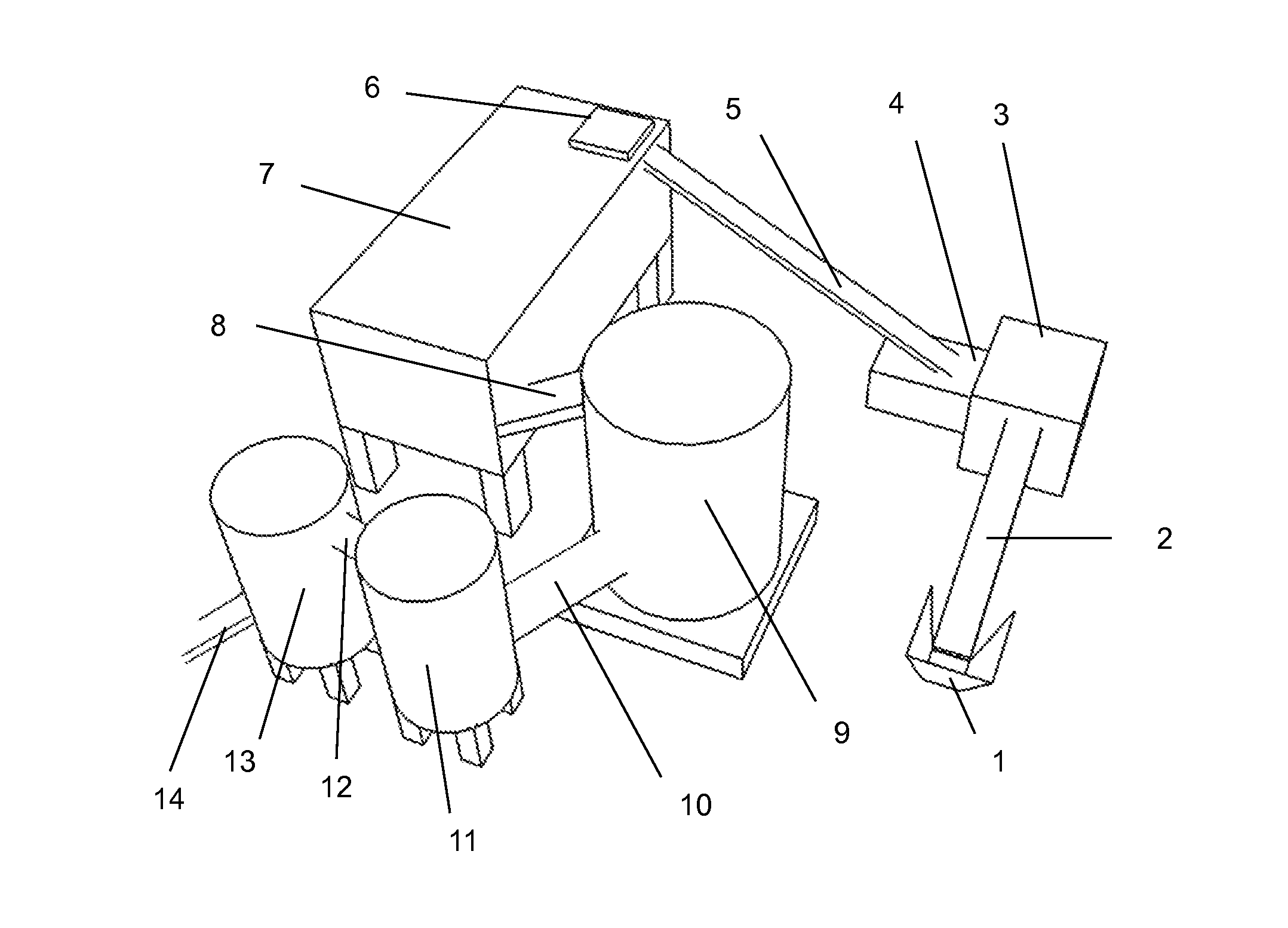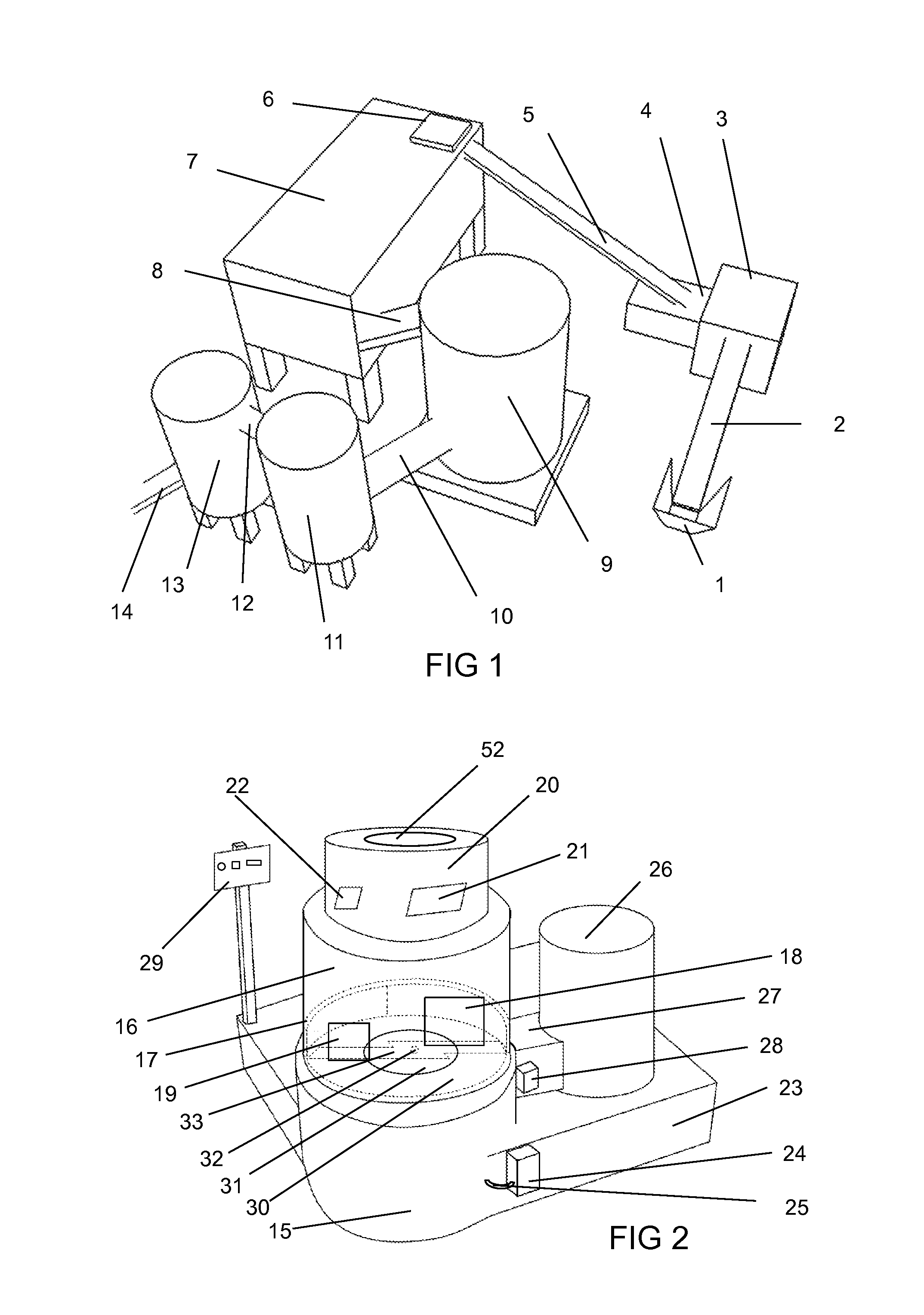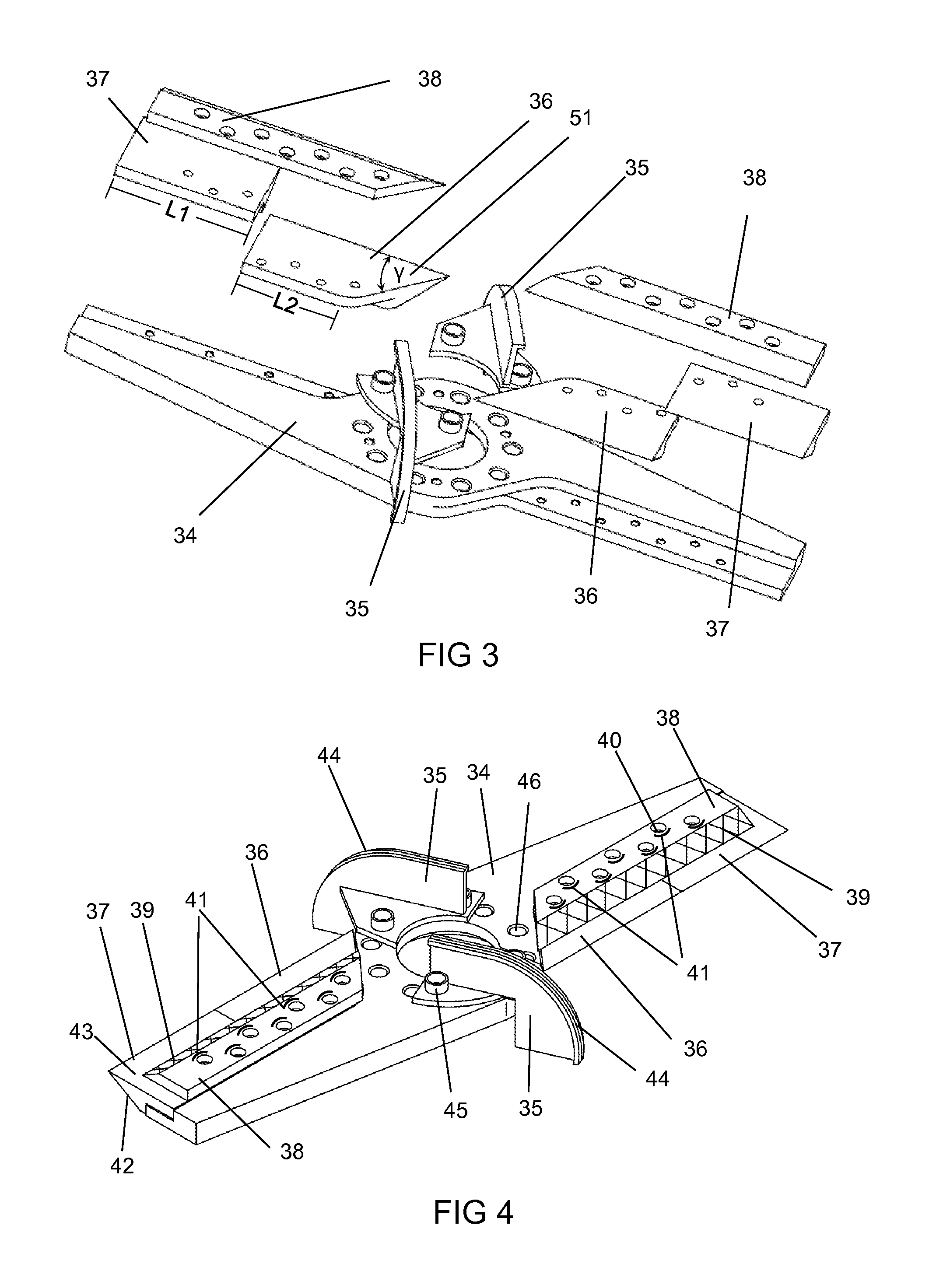Device for recycling mixed plastic waste, a blade system for said device and a method for recycling mixed plastic waste
a technology of mixed plastic waste and blade system, which is applied in the field of recycling and the recovery of plastic waste, can solve the problems of high cost, high cost, and high cost of plastic waste type sorting, and achieve the effects of increasing productivity, reducing cost, and reducing the number of plastic wastes
- Summary
- Abstract
- Description
- Claims
- Application Information
AI Technical Summary
Benefits of technology
Problems solved by technology
Method used
Image
Examples
Embodiment Construction
[0048]The system for recycling unsorted mixed plastic waste into homogenized raw material mass of unidentified, unclean, and unsorted mixed plastic waste of different densities and low volume weight, presented in FIG. 1 comprises input 1 for the mixed plastic waste, waste crusher 3, connected with the input 1 via a feed conveyor 2, metal separator 4 connected with the waste crusher 3, air separator 6 and collecting container 7 connected with the metal separator 4 via the first conveyer 5, device for recycling mixed plastic waste 9 according to the present invention, connected with the collecting container 7 via the second conveyor 8, after-cooler 11 connected with the device for recycling mixed plastic waste 9 via the third conveyor 10, homogenization device 13 connected with the after-cooler 13 via the fourth conveyor 12, and an outlet conveyor 14.
[0049]The system presented in FIG. 1 performs the preliminary processing of mixed plastic waste, the method for recycling mixed plastic ...
PUM
| Property | Measurement | Unit |
|---|---|---|
| temperature | aaaaa | aaaaa |
| angle | aaaaa | aaaaa |
| angle | aaaaa | aaaaa |
Abstract
Description
Claims
Application Information
 Login to View More
Login to View More - R&D
- Intellectual Property
- Life Sciences
- Materials
- Tech Scout
- Unparalleled Data Quality
- Higher Quality Content
- 60% Fewer Hallucinations
Browse by: Latest US Patents, China's latest patents, Technical Efficacy Thesaurus, Application Domain, Technology Topic, Popular Technical Reports.
© 2025 PatSnap. All rights reserved.Legal|Privacy policy|Modern Slavery Act Transparency Statement|Sitemap|About US| Contact US: help@patsnap.com



